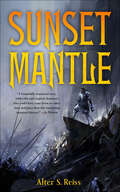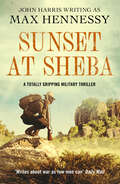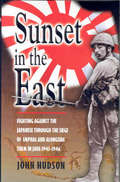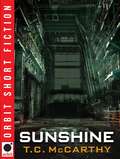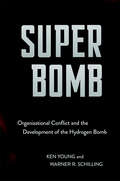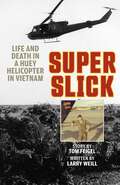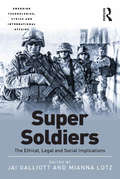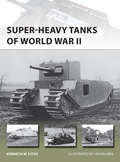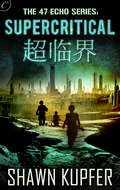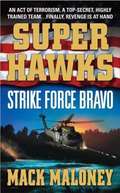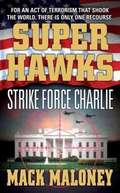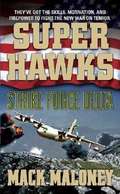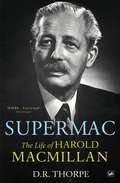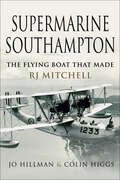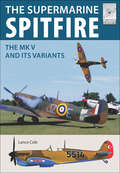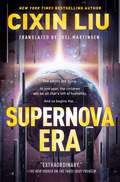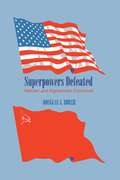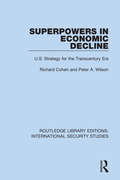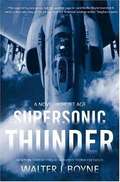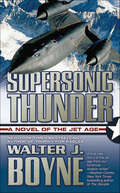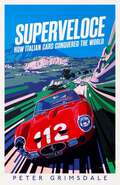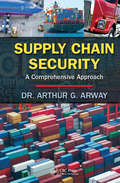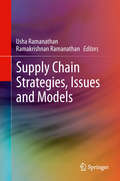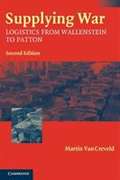- Table View
- List View
Sunset Mantle
by Alter S. ReissWith a single blow, Cete won both honor and exile from his last commander. Since then he has wandered, looking for a place to call home. The distant holdings of the Reach Antach offer shelter, but that promise has a price.The Reach Antach is doomed.Barbarians, traitors, and scheming investors conspire to destroy the burgeoning settlement. A wise man would move on, but Cete has found reason to stay. A blind weaver-woman and the beautiful sunset mantle lure the warrior to wager everything he has left on one final chance to turn back the hungry tides of war.PRAISE FOR SUNSET MANTLE"A beautifully structured story, with solid and original characters who could have come from no other time and place than this fascinating imagined history." - Jo WaltonAt the Publisher's request, this title is being sold without Digital Rights Management Software (DRM) applied.
Sunset at Sheba (Boer War Duology)
by Max HennessyA brutal rebellion. Two clashing armies. A battle to decide their fate.South Africa, 1914. Diehard Boer generals led a new rebellion against the British-friendly governments of both Jan Smuts and Louis Botha.General Christiaan De Wet’s attempt to join up with the Germans in South-West Africa failed, but the threat of the rebel forces was real to all of the men who lived through it.This is a story which began with fervent patriotism and ended in more bloodshed than anyone ever meant to spill. This is the story of the Battle of Sheba.An evocative and moving novel set between the mimosa shrubs and the thin pepper trees, perfect for fans of Alistair MacLean and Alexander Fullerton.
Sunset in the East: Fighting Against the Japanese through the Siege of Imphal and alongside them in Java 1943-1946
by John HudsonIt is generally recognized that the war in Burma against the Japanese was as fierce as any. The Battle of Kohima was the turning point of this extraordinary campaign and personal accounts of the fighting there are greatly sought after. The author was in the thick of the action and his record is indeed a graphic and moving one. Thereafter he was sent down to Malaya, but when the War ended, he found himself in Indonesia under the most bizarre circumstances. A bitter war of national independence from the Dutch colonial power was underway and it became necessary to employ the defeated Japanese troops to keep a semblance of order. This little known turn of events makes for the most fascinating reading and adds a new dimension to what would in any case be a first class memoir.
Sunshine
by T. C. MccarthyThe Armor and Weapons Division has sent Kyung to a remote planet to give their new battle suit a test run. There, she makes a shocking discovery: her own company has been illegally experimenting with a monstrous new genetic weapon--a weapon so deadly that she may not live to warn the world.
Super Bomb: Organizational Conflict and the Development of the Hydrogen Bomb (Cornell Studies in Security Affairs)
by Ken Young Warner R. SchillingSuper Bomb unveils the story of the events leading up to President Harry S. Truman's 1950 decision to develop a "super," or hydrogen, bomb. That fateful decision and its immediate consequences are detailed in a diverse and complete account built on newly released archives and previously hidden contemporaneous interviews with more than sixty political, military, and scientific figures who were involved in the decision. Ken Young and Warner R. Schilling present the expectations, hopes, and fears of the key individuals who lobbied for and against developing the H-bomb. They portray the conflicts that arose over the H-bomb as rooted in the distinct interests of the Atomic Energy Commission, the Los Alamos laboratory, the Pentagon and State Department, the Congress, and the White House. But as they clearly show, once Truman made his decision in 1950, resistance to the H-bomb opportunistically shifted to new debates about the development of tactical nuclear weapons, continental air defense, and other aspects of nuclear weapons policy. What Super Bomb reveals is that in many ways the H-bomb struggle was a proxy battle over the morality and effectiveness of strategic bombardment and the role and doctrine of the US Strategic Air Command.
Super Slick: Life and Death in a Huey Helicopter in Vietnam
by Tom Feigel100% of author royalties are being donated to the Tunnel to Towers FoundationHelicopters loom large in how we picture the Vietnam War. Kilgore&’s birds coming in hot (and Wagnerian) out of the rising sun in Apocalypse Now. The infantry/helicopter assault at Ia Drang in the climax of We Were Soldiers. A chopper flying over green rice paddies, with a teenaged door gunner manning a .50-cal. A slick dropping into an LZ whirling with purple smoke. We can only imagine it. Tom Feigel lived it, as a twenty-year-old crew chief in a Huey. Super Slick is the story of his year in Vietnam. Tom Feigel grew up a typical post-World War II kid who wrestled in high school, had a steady girl, and loved working on cars—and then everything changed. Less than a year out of high school, he was drafted into the army and assigned to aviation, ultimately to helicopters. In Vietnam in 1970, he first worked as a &“hangar rat,&” part of the ground crew responsible for maintaining the company's thirty Hueys—the Warriors and Thunderbirds—of the 336th Assault Helicopter Company, which operated in southern South Vietnam, in the Mekong Delta and U Minh Forest. In short order, Feigel volunteered for a flight mission to replace the rotors of a damaged chopper—which led to his becoming a crew chief on a transport slick called Warrior 21. Before long, he and 21's crew asked the company commander for permission to re-outfit their ship for thicker, more dangerous missions—and they ended up flying an up-gunned helicopter call sign Super Slick, tasked with similar missions but into more dangerous zones.Feigel&’s memoir recounts the thick and thin of helicopter combat in Vietnam. Heart-pumping missions into hot landing zones (sometimes inserting and extracting Navy SEALs). Adrenaline-fueled flights into enemy-infested jungles and free-fire zones. Low-level reconnaissance. &“Hash and trash&” runs to deliver supplies to far-flung units. Terrifying nighttime operations where trees posed nearly as much danger as the enemy. Razor-thin margins between life and death. It was dangerous; it was thrilling. The crews loved it; the crews hated it. They were proud of it. And they never wanted to do it again. Super Slick is as close as you can get to being inside a Huey—to hearing the radio chatter, feeling the thrum of the rotors, the pounding of the door guns.
Super Soldiers: The Ethical, Legal and Social Implications (Emerging Technologies, Ethics and International Affairs)
by Jai Galliott Mianna LotzThe Spartan City State produced what is probably one of the most iconic and ruthless military forces in recorded history. They believed that military training and education began at birth. Post-World War II saw a shift to army tanks, fighter jets and missiles that would go on to fight the next huge battle in Northern Europe. Today, with the advent of unmanned systems, our hopes are attached to the idea that we can fight our battles with soldiers pressing buttons in distant command centres. However, soldiers must now be highly trained, super strong and have the intelligence and mental capacity to handle the highly complex and dynamic military operating environment. It is only now as we progress into the twenty-first century that we are getting closer to realising the Spartan ideal and creating a soldier that can endure more than ever before. This book provides the first comprehensive and unifying analysis of the moral, legal and social questions concerning military human enhancement, with a view toward developing guidance and policy that may influence real-world decision making.
Super-heavy Tanks of World War II
by Ian Palmer Kenneth EstesThis title explores the conception and design of a range of enormous and powerful tanks that came to be designated as 'super-heavy'. The fascinating super-heavy tanks of World War II were heirs to the siege machine tradition - a means of breaking the deadlock of ground combat. As a class of fighting vehicle, they began with the World War I concept of the search for a "breakthrough" tank, designed to cross enemy lines. It is not surprising that the breakthrough tank projects of the period prior to World War II took place in the armies that suffered the most casualties of the Great War (Russia, France, Germany). All of the principal Axis and Allied nations eventually initiated super-heavy development projects, with increasingly heavy armor and armament. Much as the casualties of World War I prompted the original breakthrough tank developments, as Germany found itself on the defensive, with diminishing operational prospects and an increasingly desperate leadership, so too did its focus turn to the super-heavy tanks that could turn the tide back in their favor. Although only a small number of super-heavy tanks were built, much less saw active service, their impressive appearance and specifications - not to mention the possibilities of what might have been - have captured the interest of AFV enthusiasts, historians and military personnel. This illustrated and detailed study explores and compares these designs in unprecedented depth.
Supercarrier: An Inside Account of Life on the World's Most Powerful Ship, the USS John F. Kennedy
by George C. WilsonWhat life on a supercarrier is like...
Supercritical (47 Echo #2)
by Shawn KupferSiberia, 2021. As global tensions escalate, China attacks New York City, wiping out its entire population. Marine ex-con Nick Morrow and his team of convicts, dubbed 47 Echo, are sent on a deadly mission-to infiltrate Shanghai and shut down its computer network. Given virtually no weaponry, the crew must rely on themselves as they trek across the dangerous countryside, crawling with enemies.As they head toward almost certain death, Nick struggles to not lose his ever-thinning thread of control. Though the convict soldiers outnumber their own military counterparts, they're looked down upon as human shields. But to Nick, they're friends. The team needs him-hell, the world needs him. The stakes are higher than ever before. This will be the ultimate battle, and the consequences will test everything Nick is and will become.
Superhawks: Strike Force Bravo
by Mack MaloneyA suicidal terrorist cell threatens to detonate explosives in a Singapore skyscraper taking thousands of innocent American lives. No demands. Just sheer massive destruction-televised as it happens across the globe. As quickly as the terror unfolds, it's stopped dead-by the Superhawks, a crack team of patriotic warriors who live and breathe American vengeance. Their next step is getting the man behind the aborted attack-one of the most elusive terrorists in the world. Abdul Kazeel, supermook to Al Qaeda, has escaped their wrath before. Sequestered in a Filipino compound his new mission is to create a fanatical terrorist army. His planned attack on American soil is unthinkable, hyper-violent, and underway: blowing up more than a dozen airliners with stolen missile launchers. As the potential for disaster grows stronger by the second, the Superhawks are moving in to bring their own brand of chaos to the monster who invented the word.
Superhawks: Strike Force Charlie
by Mack MaloneyThe scheme was insanely brilliant: teams of Al Qaeda operatives sneaking their way onto American soil under every conceivable disguise, and by any deadly means possible. The collaboration is unfathomable: emissaries in the upper-echelon of our own Government are aiding them. The potential for terror is overwhelming: a cache of deadly weapons smuggled into the country at their disposal-and positioned for firing on the Fourth of July. Burned by their own government, the Superhawks have escaped imprisonment and are vowing to take on the mission themselves-locate the weapons, hunt down Al Qaeda's men, and let loose the righteous vengeance they've earned. Using deep intelligence from super-spy Bobby Murphy, the hit squad has joined forces with the New Underground-a citizens band of all-Americans ready to stand up and fight. Time is running out. The mega-attack is at hand. But so are the Superhawks.
Superhawks: Strike Force Delta
by Mack MaloneyCall it Murphy's Law....Bobby Murphy, the diminutive Texan who has worked in some of the most clandestine U.S. strike forces ever designed and has poured his cunning, knowledge and fury into a force of his own: 36 personally motivated, elite rogue warriors aboard a rusty container ship filled with the most cutting edge high-tech weapons in the world. Now Murphy's team is heading to West Africa to liberate a special Delta Force squad being held hostage by Al Qaeda...Murphy's team knows that if things go wrong, no one is coming to their rescue. But when they pull off an astounding operation, it's just the beginning of the fight. Because one of their own has come face to face with a crown prince of Al Qaeda--and with one stunning blow has opened up the door to an all-out, Superhawks invasion of the capitol of the terrorist world...... THE SUPERHAWKS HAVE ARRIVED.
Supermac: The Life of Harold Macmillan
by D R ThorpeGreat-grandson of a crofter and son-in-law of a Duke, Harold Macmillan (1894-1986) was both complex as a person and influential as a politican. Marked by terrible experiences in the trenches in the First World War and by his work as an MP during the Depression, he was a Tory rebel - an outspoken backbencher, opposing the economic policies of the 1930s and the appeasement policies of his own government.Churchill gave him responsibility during the Second World War with executive command as 'Viceroy of the Mediterranean'. After the War, in opposition, Macmillan was one of the principal reformers of the Conservatives, and after 1951, back in government, served in several important posts before becoming Prime Minister after the Suez Crisis.Supermac examines key events including the controversy over the Cossacks repatriation, the Suez Crisis, You've Never Had It So Good, the Winds of Change, the Cuban Missile Crisis and the Profumo Scandal. The culmination of thirty-five years of research into this period by one of our most respected historians, this book gives an unforgettable portrait of a turbulent age.Shortlisted for the Orwell Prize.
Supermarine Southampton: The Flying Boat that Made R.J. Mitchell
by Colin Higgs Jo Hillman“Largely photographic coverage of the graceful 1920s flying boat designed by R.J. Mitchell of later Spitfire fame . . . A nostalgic look back.” —Helicopter InternationalThe Supermarine Southampton was the first flying boat to be designed for the RAF after the First World War. Produced between 1924 and 1934, it entered into RAF service in 1925 and became the second longest serving (behind the Short Sunderland) and one of the most successful of the inter-war flying boats.In an unusual move for the times, the Air Ministry ordered six Southamptons straight from the drawing board as the design had been based on the success of the experimental Supermarine Swan amphibious aircraft. So successful was the aircraft that a further twelve were ordered in July 1925.The Southampton was a hugely successful aircraft for the RAF, the aircraft’s main sponsor, and was used for reconnaissance duties and as a patrol aircraft. It became best known for a series of publicly lauded long-distance flights, the intention of which was partly “flag waving” and partly for gaining valuable experience of flying boats in remote waters. The 1927 Far East Flight became known for the Southampton’s display of its prodigious range and reliability.The Southampton was a very profitable series of flying boats with sales also being made to Argentina, Turkey and Japan almost doubling Supermarine’s business in just a few years. A total of eighty-three of all types were built, all of which are revealed in this unrivaled collection of archive images, the majority of which, having been drawn from private collections, have not been published before.
Supermarine Spitfire MKV: The Mark V and Its Variants
by Lance ColeThe story of the Supermarine Spitfire has been told across many years and the debate about it is enduring, yet the Spitfire remains a true icon. For aviation enthusiasts, for historians, for modellers, the word Spitfire conjures many stories and affections. This book presents the Spitfire enthusiast with an up-to-date history of the Spitfire not just in its design and application in war, but also as a flying memorial and as an aero modellers vital focus.The text examines recently revealed forgotten aspects of the Spitfire story; by combining the elements of design, the story of a weapon of war and a revered scale model, this book frames an essential chapter in aviation history. Packed with original and contemporary images and information, and displaying unique Spitfire model collections, the narrative bridges an important gap and is a worthy addition to the FlightCraft series.
Supernova Era
by Cixin LiuFrom science fiction legend Cixin Liu, the New York Times bestselling and award-winning author of The Three-Body Problem, comes a vision of the future that reads “like Ursula K Le Guin rewriting The Lord of the Flies for the quantum age.” (NPR).In those days, Earth was a planet in space.In those days, Beijing was a city on Earth.On this night, history as known to humanity came to an end.Eight light years away, a star has died, creating a supernova event that showers Earth in deadly levels of radiation. Within a year, everyone over the age of thirteen will die.And so the countdown begins. Parents apprentice their children and try to pass on the knowledge needed to keep the world running. But when the world is theirs, the last generation may not want to continue the legacy left to them. And in shaping the future however they want, will the children usher in an era of bright beginnings or final mistakes?"This audacious and ultimately optimistic early work will give Liu's English-reading fans a glimpse at his evolution as a writer and give any speculative fiction reader food for deep thought." -- Shelf AwarenessAt the Publisher's request, this title is being sold without Digital Rights Management Software (DRM) applied.
Superpowers Defeated: Vietnam and Afghanistan Compared
by Douglas A. BorerDuring the Cold War, military conflicts in Vietnam and Afghanistan validated the importanct of war in global power dynamics. But military intervention proved not to be politically sustainable for the USA and the USSR. This study investigates the parallels and differences in the two conflicts.
Superpowers in Economic Decline: U.S. Strategy for the Transcentury Era (Routledge Library Editions: International Security Studies #20)
by Richard Cohen Peter A. WilsonThis book, first published in 1990, evaluates what future policy adjustments the US will have to make in order to successfully navigate through a national security environment radically altered from that of the past and one determined more than at any point in the post-war period by the economic performance of both superpowers. The structure of the book centres around two issues that will determine the future national security environment facing the US. Discussed are stakes of the threat, the response of the Soviet Union to the challenge of economic and related social/political decline and its implications for the Soviet national defence effort. Also studied are the resources available to the US to meet the threat, the status of the US economic performance and the magnitude of resource stress it is likely to face in the future and its probable impact on the US national defence effort.
Supersonic Thunder: A Novel of the Jet Age (Jet Age Trilogy #2)
by Walter J. BoyneFrom the first flight of the U-2 to the flashing speed of the famous SR-71 Blackbird, Supersonic Thunder is a portrait of the jet as it comes of age. Aviation genius is personified in famous engineers such as Kelly Johnson and Ben Rich and in test pilots like Tony LeVier and Tex Johnson in this fast-moving story of military and commercial jet aviation. Under the guidance of top test pilot and engineer Vance Shannon, the reader is present at every major event in jet aviation in the 1960s and 1970s. The Shannon family continues its business successes and domestic failures as they battle the ever-changing jet industry. Vance looks to his two sons, Tom and Harry, to keep the family business on the cutting edge, as they balance their professional and personal lives. Supersonic Thunder takes readers from Gary Powers's U-2 shoot down to the first flight of the Russian Supersonic Transport, and goes behind the scenes, revealing the motivations of top Russian, English, and American designers as they push the limits of engines and airframes and confront the difficulties of the pursuit of Mach 2.0 speeds. From the luxury of the 747 to the abject despair of a cell in the Hanoi Hilton, Supersonic Thunder tells the real story of this amazing chapter of jet aviation in terms of the men and women who lived and died to make it a part of our everyday life.
Supersonic Thunder: A Novel of the Jet Age (Novels Of The Jet Age Ser.)
by Walter J. BoyneFrom the first flight of the U-2 to the flashing speed of the famous SR-71 Blackbird, Supersonic Thunder is a portrait of the jet as it comes of age. Aviation genius is personified in famous engineers such as Kelly Johnson and Ben Rich and in test pilots like Tony LeVier and Tex Johnson in this fast moving story of military and commercial jet aviation.Under the guidance of test pilot and engineer, Vance Shannon, the reader is present at every major event in jet aviation in the 1960s and 1970s. As the ever-changing industry begins to speed up beyond Vance's grasp, he turns to his two sons, Tom and Harry, to keep the family business on the cutting edge. Though they've followed in their fathers' footsteps for many years, the stress from trying to stay ahead of the curve is destroying their families--as well as fueling a long hidden rivalry between the two brothers. As the Shannon family struggles with their personal and professional lives, Supersonic Thunder reveals the great leaps of the aviation industry during this astonishing era, from Gary Powers' U-2 shoot down to the first flight of the Russian Supersonic Transport. With historic and dramatic detail, we are taken behind the scenes, revealing the motivations of top Russian, English, and American designers as they push the limits of engines and airframes and confront the difficulties of the pursuit of Mach 2.0 speeds. From the luxury of the 747 to the abject despair of a cell in the Hanoi Hilton, Supersonic Thunder tells the real story of this amazing chapter of jet aviation in terms of the men and women who lived and died to make it a part of our everyday life. At the Publisher's request, this title is being sold without Digital Rights Management Software (DRM) applied.
Superveloce: How Italian Cars Conquered the World
by Peter GrimsdaleIn 1950, at the first Formula One Grand Prix in Britain after World War II, 150,000 spectators, including the royal family, watch in dismay as Italy's Alfa Romeos take the first three places – ahead of seven more Italian Maseratis. In Paris, at the Salon d'Auto, Pininfarina's breathtakingly stylish Lancias, driven form Turin by the designer and his son, are denied entry. Parked outside, they nevertheless steal the show. How can it be that Italy, pummelled into submission by Allied bombs, is already setting new standards of speed and style that leave the rest of the world for dust? The answers lie deep in Italy's cultural heritage, in historic links between art and machine going back to Leonardo da Vinci. In Superveloce, Peter Grimsdale traces a century of Italian design genius and the rise of its great automotive dynasties, Ferrari, Farina, Maserati and Fiat's Agnellis. We see the lives of fiercely charismatic and competitive drivers like Ascari, Campari and Nuvolari, and explore the mystery of how a nation that never had an industrial revolution like Britain and France set standards of design innovation that other nations struggled to match. Grimsdale takes the reader on a journey of discovery through Italian history, design, speed and beautiful, beautiful cars.
Supply Chain Security: A Comprehensive Approach
by Arthur G. ArwayThe supply chain is a complex system of numerous, integrated stakeholders. These stakeholders are responsible for the transportation, storage, documentation, and handling of material goods and cargo. Each entity has its own unique relationship with and role within the chain as well as its own unique security requirements. The challenge of trying to
Supply Chain Strategies, Issues and Models
by Usha Ramanathan Ramakrishnan RamanathanIn the 21st century, supply chain operations and relationships among supply chain partners have become highly challenging, necessitating new approaches, e. g. , the development of new models. Supply Chain Strategies, Issues and Models discusses supply chain issues and models with examples from actual industrial cases. Expert authors with a wide spectrum of knowledge working in various areas of supply chain management from various geographical locations offer refreshing, novel and insightful ideas and address possible solutions using established theories and models. Supply Chain Strategies, Issues and Models features studies that have used mathematical modeling, statistical analyses and also descriptive qualitative studies. The chapters cover many relevant themes related to supply chains and logistics including supply chain complexity, information sharing, quality (six sigma), electronic Kanbans, inventory models, scheduling, purchasing and contracts. To facilitate easy reading, the chapters that deal with supply chain related issues are first, followed by studies on inventory, scheduling, purchasing and logistics. This book can be used as a useful resource of supply chain management by academics, students and practitioners. This book can serve as a helping tool in managerial decision making for investments in collaboration and information exchange to improve forecasts, scheduling and inventory management, and for supply chain managers to leverage product and process complexities into competitive advantage. Some interesting mathematical models can appeal to students and researchers interested in modeling the impact of information sharing in supply chains.
Supplying War: Logistics from Wallenstein to Patton
by Martin Van CreveldWhy did Napoleon succeed in 1805 but fail in 1812? Could the European half of World War II have been ended in 1944? These are only two of the many questions that form the subject-matter of this book. Drawing on a very wide range of sources, van Creveld examines the specifics of war: namely, those formidable problems of movement and supply, transportation and administration, so often mentioned - but rarely explored - by the vast majority of books on military history. In doing so he casts his net far and wide, from Gustavus Adolphus to Rommel, from Marlborough to Patton, subjecting the operations of each to a thorough analysis from an unusual point of view. In this edition with a new introduction, van Creveld revisits his now-classic text, and comments in a new afterword on the role of logistics in high-tech, modern warfare.
